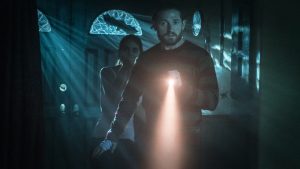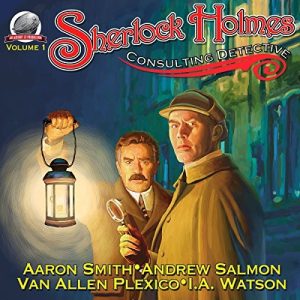To be notified of my upcoming book where I discuss this blog topic in more detail, in the context of my future defining career guidance method click here.
Most people live their lives by using a flashlight to try and understand themselves. What they are using is what I have termed “Flashlight Awareness” or “FA”. Unfortunately, FA does not get you anywhere near your full potential. FA is a major reason why even good people become tragically derailed by their character flaws. See my viral blog entitled “10 character flaws that derail even good people”.
Can you remember the last time you used a flashlight? You needed that narrow beam of light because you had to see your way through the darkness surrounding you. Each of us has experienced how this narrow beam of light can only intensely focus on one small area at a time. Horror movie directors love to exploit the narrowness of this beam as they design scenes where the hapless individual, surrounded by vast darkness, suffers a horrible fate due to attacks from deadly creatures eluding this narrow beam.
In this blog I am going to illustrate how the typical human life suffers the same fate as that hapless movie character. This is because they over trust their FA, which is naturally built-in from 100’s of 1,000s of years of human evolution. I will also illuminate how psychological assessment can not only prevent this horror movie tragedy, but give you a strategic blueprint to reaching your true potential. It does this by creating a broader “Lantern Awareness”, or “LA”.
Let’s start off with some hard-core science. If you gathered together the top 50 cognitive scientists in the world right now, and you asked them how narrow the day-to-day flashlight beam of awareness people automatically use is, they would all answer “very, very narrow”.
For example, Nobel laureate cognitive scientist Dr. Daniel Kahneman wrote a best-selling book called “Thinking fast, Thinking slow”, where he outlined how the vast majority of human information processing and judgment is massively influenced by operations outside that narrow flashlight beam of conscious awareness.
Kahneman’s insightful model of the human mind has had a tsunami impact not only on the field of cognitive science, but globally on the general scientific understanding of the human mind. This 2013 book currently has 41,000 Amazon.com book reviews, with a rating of 4.6 out of 5.0!!
One implication of Kahneman’s work is to ensure you realize just how narrow your moment-to-moment awareness is. The cold hard truth is your flashlight awareness limits your awareness to about as much information as you are currently looking at on this screen right now. While the conscious facet of your mind is aware of what you are looking at, the much more voluminous and faster unconscious facet of your mind (which is the “thinking fast” part of your mind) is constantly performing a massive number of operations in the background, just like what the computer tower of your desktop computer is doing constantly.
Kahneman’s point is there is a massive amount of hidden, lightning quick unconscious operations influencing how you are peceiving, thinking or making decisions. This voluminous amount of unconscious mental processing is constantly influencing you, but because you always **feel like** you are choosing what to focus on, what to think or feel, you are convinced you are completely in control. But your “freedom” is to a significant degree illusory.
If you want to think of it in terms of percentages, the typical individual is aware of about 5% of the mental processing that is contributing to what, and how, they are thinking about what is currently in their beam of interest. Meanwhile, 95% of mental processing is automatically going on in the unconscious facet of the mind.
The power of LA focused psychological assessment is it broadens your perspective, as it panoramically lights up the surrounding environment of previously undetected creatures affecting your flow of consciousness. It can raise your awareness to incredibly more powerful levels, allowing you to gain more actual autonomy to make decisions that are not robotically driven by hidden forces. You also can go from a narrow angle lens to a wide angle lens that increases its range the broader your awareness becomes.
For psychologists and the historically great detectives, the lantern is an iconic image. Lantern driven psychological assessment pierces the vast darkness of the mind which a flashlight can only make feeble attempts to explore because it only allows you to see a small area at any one time. FA does not help you get an overall feel for how those “dark operations” interact with each other. But LA does.
What psychological assessment specifically does, that nothing else can, is it allows you to illuminate key patterns that you had no idea were so powerfully affecting the flow of your consciousness. As an expert clinical lead detective, my psychological evaluations typically culminate with a cognitive map illuminating how previously darkly cloaked creatures interact with each other to subtly influence an individual’s thoughts, feelings, behavior and even memories.
Isn’t that what great detectives do? They map out the operations going on.
But the power of this LA goes beyond just seeing the dangerous mental creatures, such as negative thought patterns that can often powerfully direct the flow of your consciousness. This LA can also, when the psychological assessment is thorough, allow you to understand how these different creatures feed off of each other. For example, anxiety based creatures often team up with anger based creatures.
Certainly, you can take what I call the “lone wolf” approach to trying to understand yourself with self-help books, and avoid the psychologist’s office. But if you have enough maturity and courage to put your flashlight down, and are willing to systematically chart the darkness that the vast majority of your mind operates within, you are giving yourself the best chance to avoid the fate of the hapless horror movie character. You can become more in control of the river of your consciousness, instead of being at the mercy of darkness your flashlight cannot light up.
Over the last 20 years, as I have fiercely focused on conducting the most comprehensive level of psychological assessment, over and over again, there is one truth that trumpets itself most loudly: the fate of the typical human is driven much more by what lies in their personal darkness than what tends to be naturally lit up by their flashlight. In other words, many people suffer the fate of the hapless horror movie character.
Too many people over rely on their strengths, forgetting that certain creatures in the dark are powerful enough to snuff out your light. Even if you do not know it is happening. Think about it, how many of your friends are so close to you that they would tell you whenever they notice a dark creature lurking in your personality? Very few, if any. So most people stay in their bubble.
Admittedly, quality psychological assessment is not cheap, but consider the cost of living a narrow flashlight life where you have no idea how many psychological creatures are attacking you, on a daily basis.
Unlike a horror movie, psychological creatures often attack you with bites or slashes you do not even feel. Instead, they more insidiously hurt you over time, as they enjoy eluding the flashlight most people trust.
Lack of psychological insight leads to one of the most subtle forms of murder on planet Earth. Because it secretly kills your chances of reaching your true potential. You do not reach your true potential by simply riding on your bright side strengths. Rather, you reach your true potential by making your bright side even brighter by getting rid of dark creatures sucking away the voltage from your bright side characteristics.
Those on the cutting edge of every field, from professional athletes to Fortune 500 company leaders, are increasingly using the psychological assessment lantern. The questions is, are you willing to face your own darkness?


